Part 2: Dogs
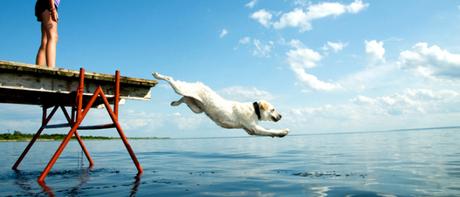
People often automatically assume that just because many dogs love water and love swimming that all dogs love it and can swim instinctively. This is not necessarily the case and when it comes to dogs and swimming, there are actually three distinct groups.
Group 1: Those that inherently know how to swim
Examples in this category are Labrador retrievers, who typically love water and once they are in it’s often pretty difficult to get them back out.
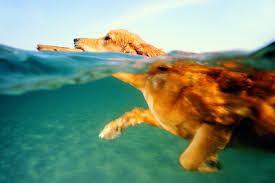
Group 2: Those that can be taught
If your dog is a breed that could swim and could enjoy swimming you can encourage him by beginning in shallow, calm water. If he responds well to that and likes to chase tennis balls or floating toys, you could try tempting him with the toys.
Group 3: Those that need to stay away from pools or other bodies of water at all costs
Dogs that fall into this category are typically those with large heavy chests relative to their hindquarters, short legs, and short muzzles. Examples of this are English bulldogs, pugs, French bulldogs, corgis and basset hounds. Some of these breeds have very low body fat too, making them far more susceptible to hypothermia in colder waters. If you own a dog with these physical characteristics it would definitely be advisable to keep him or her away from bodies of water or be equipped with a life vest if you cannot avoid this.
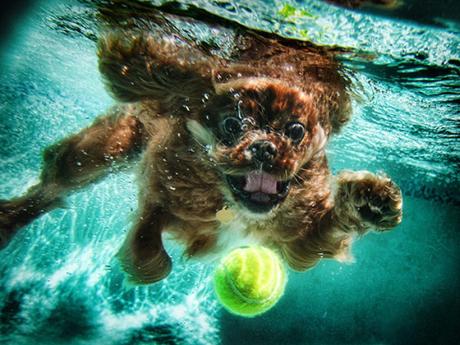
Teaching your dog to swim
Start off slowly by introducing your dog to shallow water. It is often advisable to put a life vest on the dog and/or a leash. If your dog responds well to this, gradually move to deeper water so that he needs to do some paddling. Support your dog underneath the belly area to encourage him to use all 4 legs to swim. Just as with teaching children to swim, it is advisable to keep swim sessions with your dog fairly short, but done regularly.
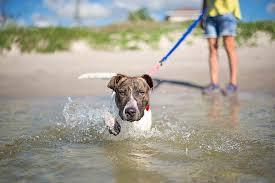
It is important to keep in mind that many dogs just simply don’t enjoy swimming. Even breeds that were bred for swimming (such as Labrador retrievers) don’t always enjoy it. Some may be able to swim but are actually scared of the water. Fear can increase fatigue, so always monitor whether your dog is showing signs of being fearful.
Never let your dog swim in areas where the water is too cold or where there are currents. Don’t let your dog get overly tired while swimming. This is particularly important if you have a puppy or a senior dog. Do bear in mind that dogs can get disoriented when swimming, so keep a close eye on your dog’s location in the water.
There are lots of different options available for life vests. These should be used when your dog goes on a boat, or if he is included in activities such as river floats or paddle boarding.
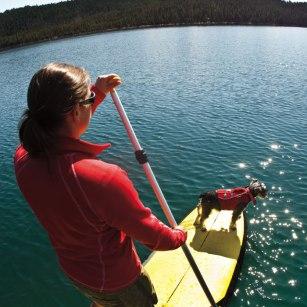
After all the fun of the water, do remember to give your dog a shower or bath to rinse any residual chlorine or salts from his coat. Cleanse ears with an appropriate product and ensure that they are gently but thoroughly dried to prevent ear infections. Provide fresh water for drinking after swimming.
Is your dog a natural swimmer or afraid of the water? What tips worked best for you?
ENJOYING THE PET BARRIER BLOG ARTICLES? WHY NOT FOLLOW US ON TWITTER AND FACEBOOK? WE’D LOVE TO HAVE YOUR COMPANY!
Tagged: afraid, boats, chlorine, cold, currents, dog breeds, Dogs, fatigue, fun, Health, hypothermia, lakes, learning to swim, life vests, Lifestyle, rivers, Swimming, tired, Travel


